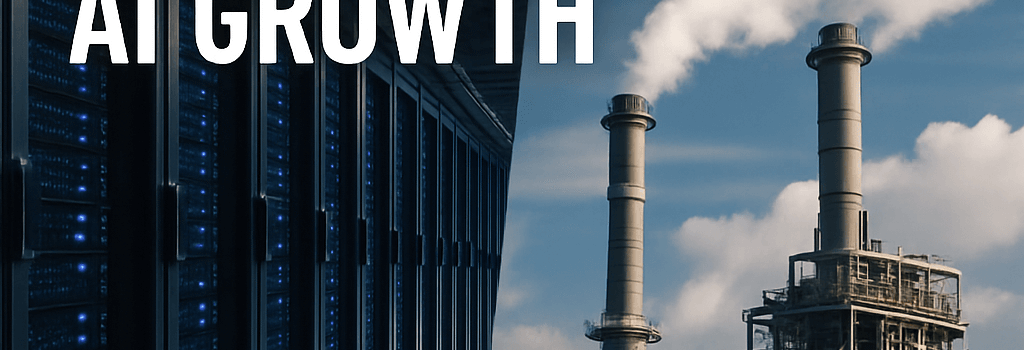Texas Data Centers Build Gas Plants for AI Growth

In rural regions across Texas, a wave of data center developers are bypassing the public grid to construct dedicated natural gas power plants. As large-scale AI models and high-performance computing (HPC) clusters proliferate, the urgency for reliable, low-latency electricity is reshaping the state’s energy landscape. This article dives into the technical drivers behind this trend, the regulatory backdrop, and the environmental trade-offs.
Expanding Data Center Energy Demand in the AI Era
Modern AI workloads can consume 20–40 megawatts (MW) per facility—equivalent to 10,000 homes running air conditioners simultaneously. Hyperscalers and startups alike are racing to deploy GPU- and TPU-packed racks, each server drawing 10–20 kilowatts in peak operation. In West Texas alone, projects under development total over 10,000 MW of on-site generation capacity, according to the Energy Information Administration (EIA) and grid operator ERCOT.
Why Gas Over Renewables?
Intermittency and lead times make wind and solar less attractive for mission-critical loads. Without multi-gigawatt battery storage—still two to three years from large-scale commercial viability—renewables cannot guarantee the 24/7 uptime required. Natural gas turbines ramp up in under ten minutes, and combined‐cycle plants can hit 60% efficiency, compared to 35–40% for simple-cycle units.
“Even the largest hyperscalers prioritize speed to market over carbon targets when interconnection queues stretch beyond five years,” says Kent Draper, CCO at IREN.
Technical Specifications of On-Site Gas Plants
Typical on-site installations use 50- to 100-MW modular gas turbines (e.g., GE LM6000 or Siemens SGT-800). Key metrics include:
- Heat rate: 7,500–8,500 BTU/kWh (efficiency 38–45%)
- Start-up time: 5–15 minutes from cold start
- Emissions controls: selective catalytic reduction (SCR) reducing NOx by 90%, low-NOx burners
- Water usage: 0.2–0.4 gallons per kWh for wet cooling systems
Some advanced plants integrate combined heat and power (CHP) to capture waste heat for campus heating or absorption chillers, boosting overall thermal efficiency to 60–70%.
Grid Interconnection Challenges and Legislative Response
ERCOT currently processes over 2,500 generation interconnection requests, representing 500,000 MW of capacity. Long lead times, network upgrades, and stability studies have prompted lawmakers to propose S.B. 6—imposing $150,000 deposits for large-load studies—to weed out speculative projects. Simultaneously, regulators are exploring dynamic line ratings and grid-forming inverter rules to squeeze more capacity from existing transmission assets.
Environmental and Regulatory Considerations
While natural gas emits ~50% less CO₂ than coal per kWh, methane leakage across the supply chain can offset these gains. A recent study by the University of Texas estimates a 2.5% fugitive emission rate in West Texas, each percentage point representing ~1.5 million metric tons CO₂e annually. Permitting hurdles now often include:
- Air quality modeling under EPA’s AERMOD for NOx, CO, SO₂, PM₂.₅
- Continuous emissions monitoring systems (CEMS) for real-time reporting
- Local health impact assessments and community engagement plans
Case Study: CloudBurst & Energy Transfer Partnership
In New Braunfels, AI startup CloudBurst teamed with Energy Transfer to develop a 1,200-MW gas plant using pipeline pressure let-down turbines. The configuration uses a hybrid cycle—simple-cycle gas turbines for peak loads and heat recovery steam turbines (HRST) for baseload—to achieve 55% net efficiency. CloudBurst engineers specified redundant 138 kV switchyards and automatic generation control (AGC) to synchronize with ERCOT in <10 seconds.
Future Outlook: Balancing Reliability, Sustainability, and Costs
Industry projections by S&P Global and Wood Mackenzie forecast data center electricity demand to double by 2030, driving natural gas consumption up to 7 Bcf/day. On the policy front, carbon price modeling shows that a $40/ton CO₂ levy could tilt new builds back towards renewables plus storage within five years. Meanwhile, emerging small modular reactors (SMRs) and hydrogen-blended pipelines may offer alternative baseload options by 2032.
Emerging Decarbonization Strategies
- Green hydrogen co-firing up to 20% by volume in turbines to cut CO₂ by 10–15%
- CCS retrofits using amine-based capture on HRST exhaust streams
- Virtual power plants aggregating behind-the-meter batteries at data center sites
Expert Take
“Operators should consider a hybrid energy portfolio: on-site gas for reliability, complemented by PPAs for renewables to manage lifecycle carbon risk,” advises Dr. Emily Chen, energy systems researcher at Rice University.
As Texas stands at a crossroads, stakeholders must weigh the imperatives of AI innovation, grid resilience, and climate goals. The next decade will reveal whether the state can integrate emerging clean technologies without compromising the surging demand for digital services.